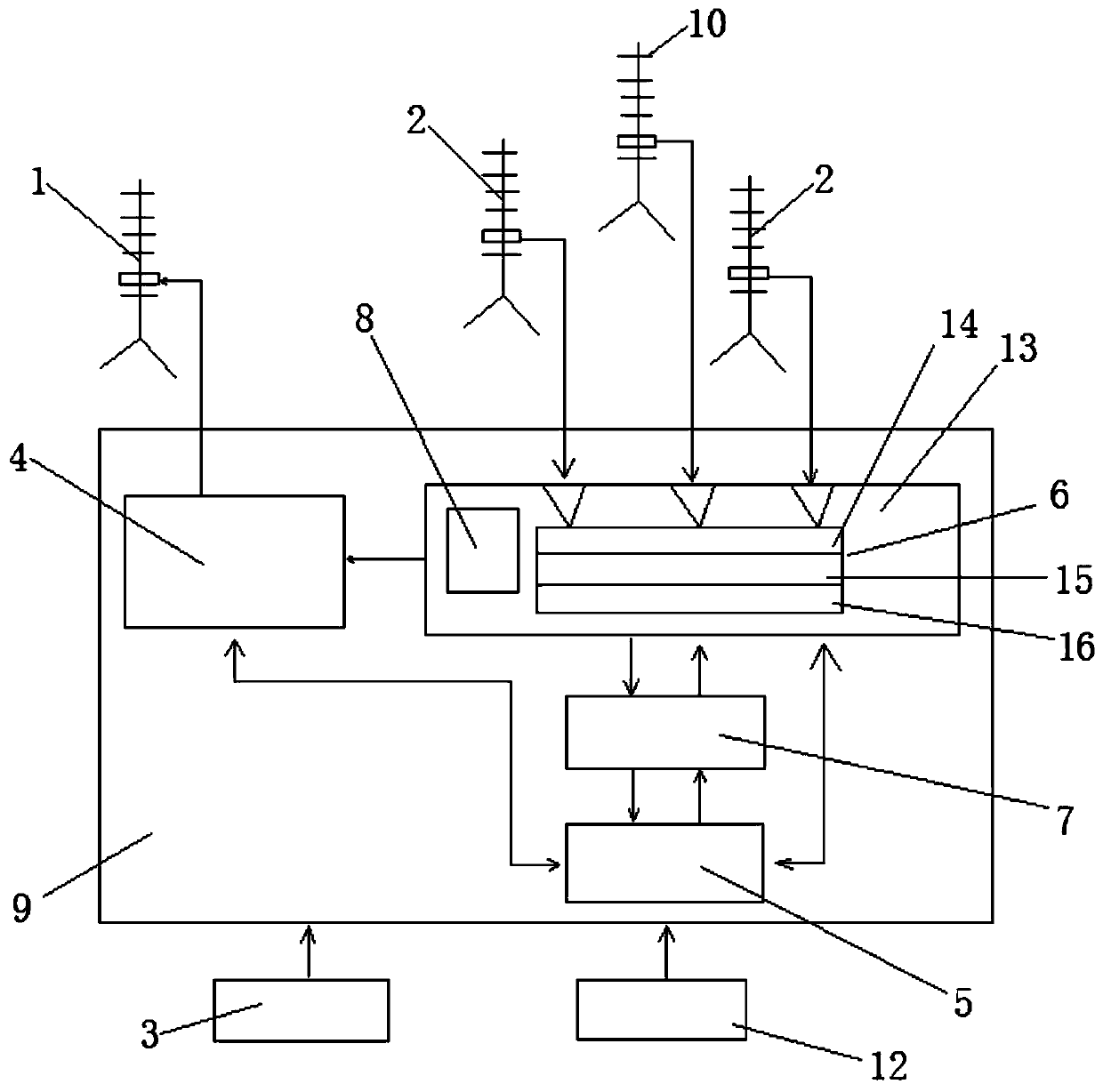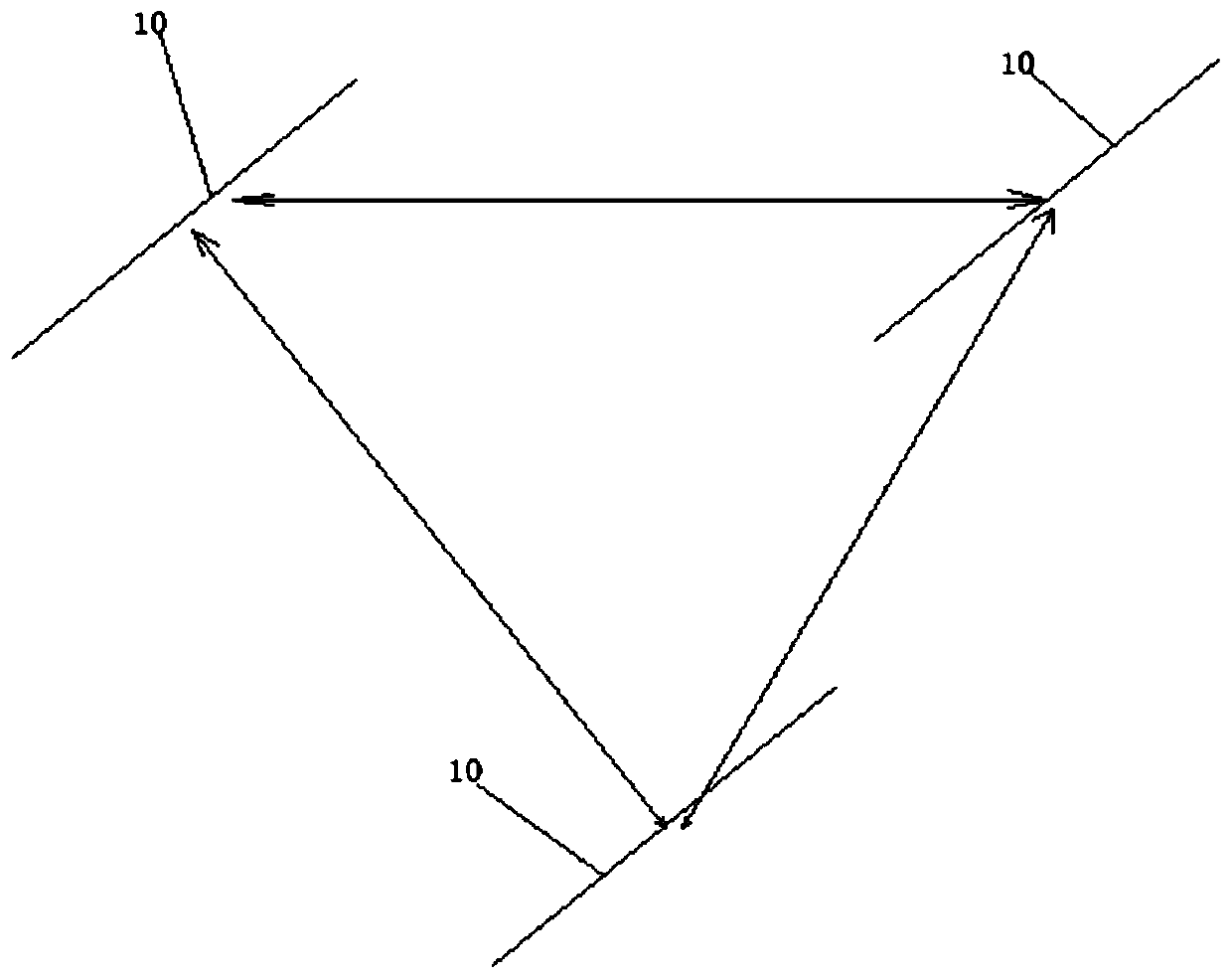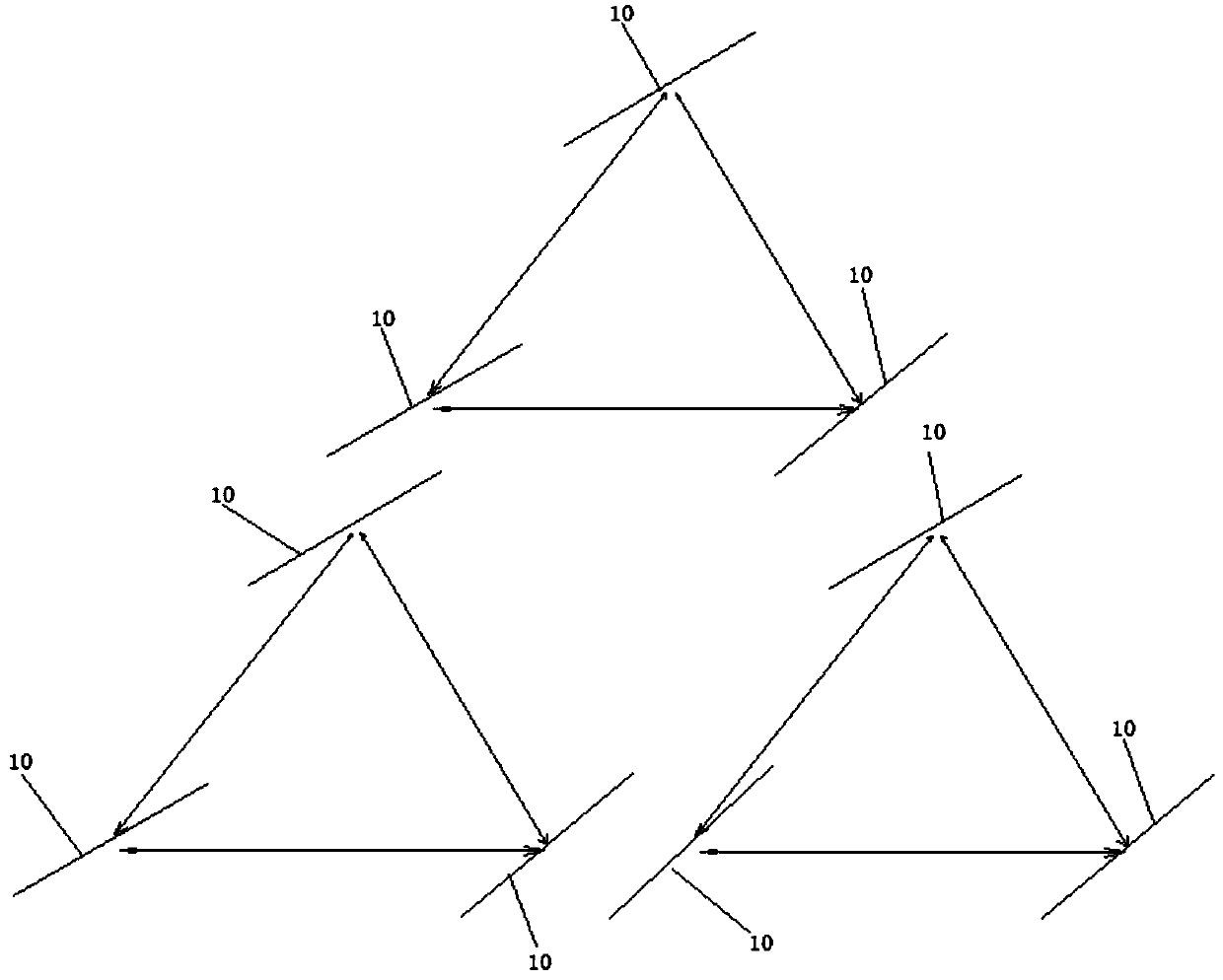Wind profiler radar based on interference algorithm
A wind profile radar and algorithm technology, applied in the field of wind profile radar, can solve the problems of short detection period, long detection period, large weight and volume, etc., and achieve the effects of excellent performance, simplified manufacturing cost, and simple equipment
- Summary
- Abstract
- Description
- Claims
- Application Information
AI Technical Summary
Problems solved by technology
Method used
Image
Examples
Embodiment 1
[0053] Such as figure 1 , figure 2 As shown, a wind profile radar based on an interferometric algorithm, the wind profile radar works in the P-band; includes a transmitting antenna 1, a receiving antenna 2, an integrated cabinet 9, a power module 3 and a communication module 12. Wherein, the integrated chassis 9 includes a transmitter 4 , a receiver 6 , a signal processing unit 7 , and a data processing unit 5 . The wind profiler radar is installed perpendicular to the ground, emits electromagnetic waves upwards, measures the parameters of the wind from the ground to more than 1km, and outputs the horizontal wind direction, horizontal wind speed, vertical wind speed, and vertical wind direction distributed according to height.
[0054] Further, when the radar is working, firstly, the data processing unit 5 controls the signal processing unit according to the determined working mode, and the signal processing unit 7 controls the frequency source of the receiver 6 to generate a ...
Embodiment 2
[0097] In this embodiment, the number of receiving antennas is 9, such as image 3 As shown, the spacing between the antenna elements in the three antenna groups is still 0.7λ, and the spacing is 0.5m. The distance between the three groups is 1.3λ, and the distance is 0.92m. Other content of this embodiment is the same as that of Embodiment 1, and will not be repeated here.
Embodiment 3
[0099] The number of receiving antennas in this embodiment is 27, which are not shown in the figure, and the spacing between the antenna elements in the three antenna groups is still 0.7λ, and the spacing is 0.5m. The distance between the three groups is 2.0λ, and the distance is 1.4m. Since the area of the antenna array is relatively large, the receiving antenna array and the transmitting antenna array can share one. Other content of this embodiment is the same as that of Embodiment 1, and will not be repeated here.
PUM
 Login to View More
Login to View More Abstract
Description
Claims
Application Information
 Login to View More
Login to View More - Generate Ideas
- Intellectual Property
- Life Sciences
- Materials
- Tech Scout
- Unparalleled Data Quality
- Higher Quality Content
- 60% Fewer Hallucinations
Browse by: Latest US Patents, China's latest patents, Technical Efficacy Thesaurus, Application Domain, Technology Topic, Popular Technical Reports.
© 2025 PatSnap. All rights reserved.Legal|Privacy policy|Modern Slavery Act Transparency Statement|Sitemap|About US| Contact US: help@patsnap.com



